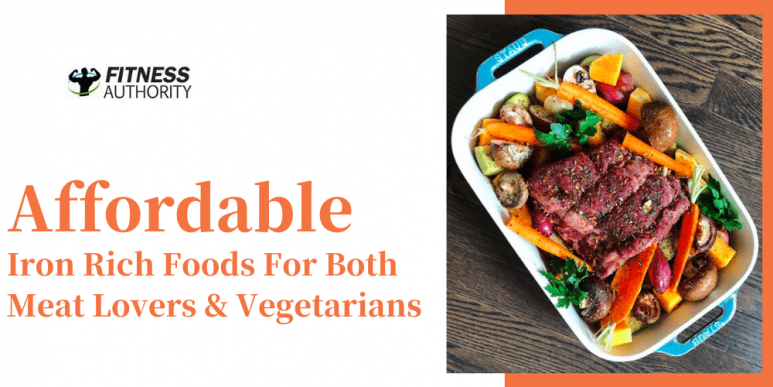
Quick Jump To List
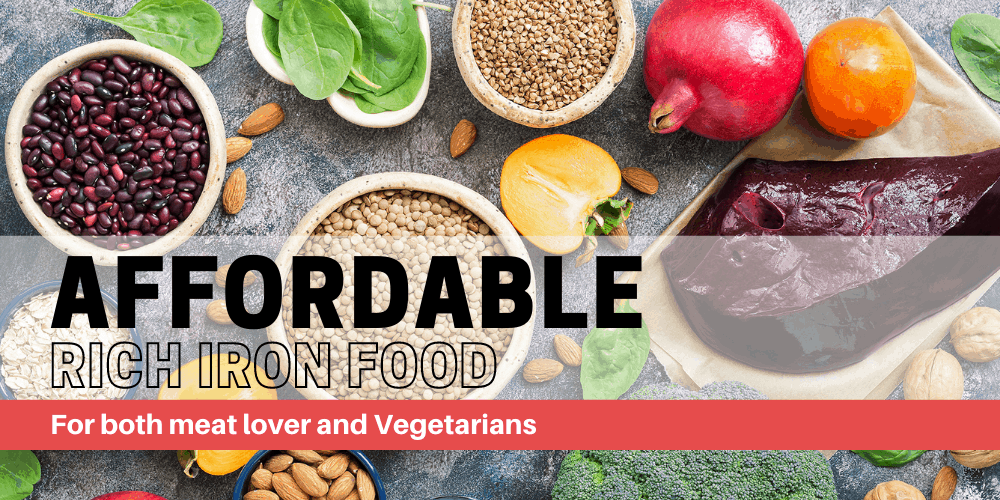
Iron is essential for the health of the blood and hence for the health of the body as a whole. It also plays a key role in building strong muscles. Consequently, the symptoms of iron deficiency tend to revolve around physical and mental weakness, for example, low energy, fatigue and feeling cold, especially in the hands and feet.
The amount of iron you need in your diet varies according to your age, gender and lifestyle, but as a rough guide, adult men generally need about 10mg per day and adult women around 18mg per day. Iron is commonly associated with meat and indeed meat is a very good source of iron, but meat is a broad food group and some kinds of meat are a better source of iron than others.
It used to be commonly thought that vegetarians and vegans were at high risk of iron deficiency, but by this point in time it should be clear that this idea is very far from true. Provided that vegetarians and vegans eat an overall healthy diet, they should be able to get all the iron they need from non-meat sources.
For Meat Eaters
The following list of foods are the ones we feel offer best value for money in terms of getting plenty of iron (and protein) for a reasonable price. There are plenty of other options for integrating iron into your diet, if your budget allows, but if money is tight, these foods will get you the nourishment you need without stretching your finances. We’d also suggest meat eaters take a look at the vegetarian and vegan foods too, as these are a great way to maximize your iron intake at minimal cost.
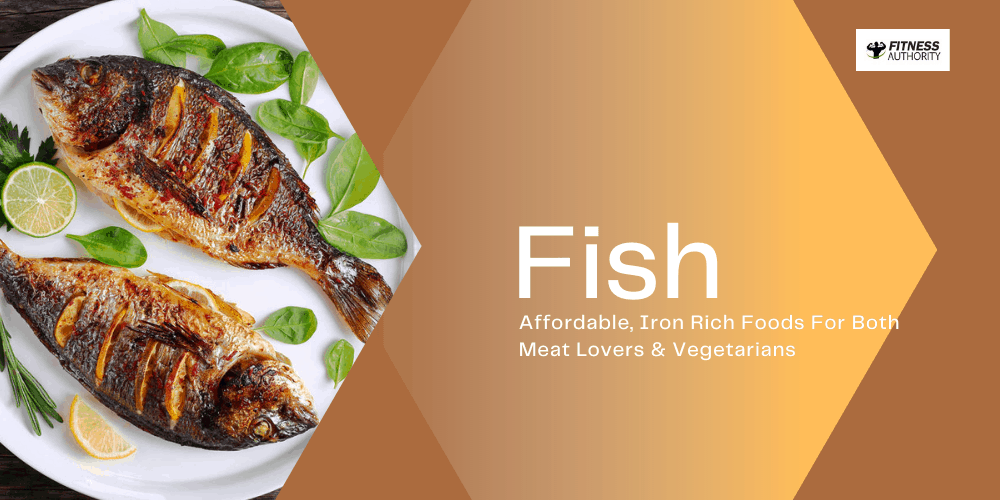
Fish
Common, cheap kinds of fish, such as cod (also known as haddock or pollock) are a great way to get the iron you need. If you look for oily fish in particular, then you also benefit from their fatty acid content as well as their protein. Shellfish is also a good source of iron, but some people may need to exercise caution about eating it.
The nutritional value of fish depends on what fish you eat and how you cook it, but as an example, 100g of cod has about 90 calories, 1g of fat and 15g to 20g of protein as well as about 0.4g of iron.
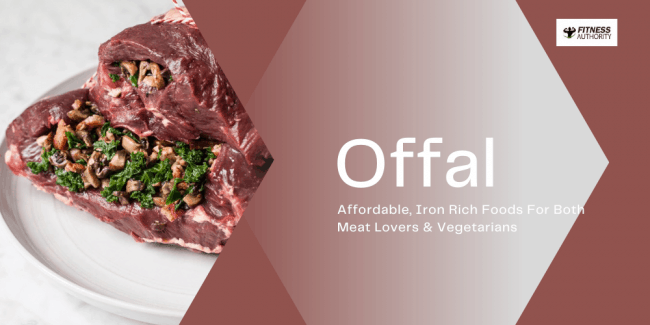
Offal
Offal just means organs and entrails and while this may sound off-putting, they’re actually full of flavour. We’ll admit the texture can be an acquired taste but if it isn’t for you, then try putting your offal into a soup or stew where its texture can be disguised fairly easily. Offal is full of all kinds of nourishment and is usually priced very affordably.
Again the nutritional value of offal depends on what you eat and how, but the old favourite of cow’s liver has about 132 calories, along with about 4g of fat and 20g of protein and almost 12mg of iron, which is well over your RDA, even for a man.
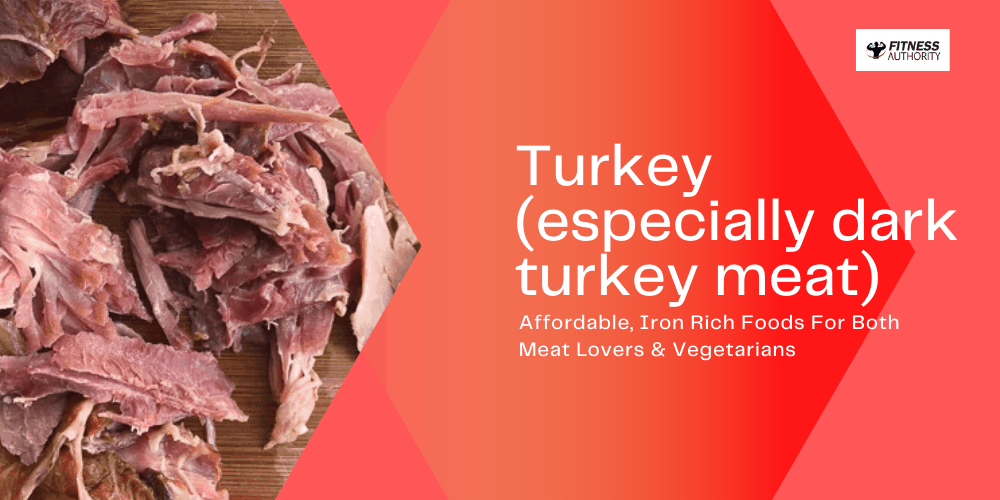
Turkey (especially dark turkey meat)
Turkey isn’t just for Thanksgiving and Christmas, it can be eaten all year round. It’s generally priced very reasonably and it’s an excellent source of iron. Dark turkey meat (from the legs) is particularly good, in fact it has almost twice as much iron as white turkey meat (from the breast), but if you really prefer white turkey meat then you can enjoy it knowing that it is still giving you plenty of iron (and protein) along with its great taste.
A raw turkey leg has about 120 calories per hundred grams, with about 11g of fat and 30g of protein along with 2mg of iron

Chicken
Chicken is probably one of the most popular meats in the world, because it’s so tasty and affordable and it’s also a good source of iron. Don’t just head straight for the breasts as they are generally the most expensive part of the chicken. Look at drumsticks or buy a whole chicken and use every part of it, including the bones, they make great stock.
Grilled chicken without the skin has about 150 calories, with about 3g of fat, 30g of protein and 3mg of iron.

Cheap Cuts of Red Meat
Let’s clarify a point quickly, the hysteria about red meat and heart disease is based on well-meant scientific research, which is now considered both questionable and outdated. Red meat itself is a very useful source of iron and can be enjoyed as part of a healthy diet (obviously it becomes a whole lot less healthy if you fry it and eat it with other fried foods).
The trick to eating red meat on a budget is to go for cheaper cuts of it, ideally from older animals. If you’re worried about texture and tenderness, then remember that any meat can be made tender and easy to eat by the right cooking (slow cookers are great for this). Meat from older animals is not just cheaper than meat from younger ones, it often has more flavour too. So skip the expensive steak and head for cheap cuts like brisket or buy minced meat, which is generally very good value.
As an example, 100g of minced beef has around 140 calories, 4g of fat and 20g of protein as well as 4mg of iron.
For Vegetarians

Eggs
Eggs aren’t a huge source of iron, a large one provides about 1mg, but they offer a lot of nourishment in a very small package and are a really versatile food which can be easily included into everyday meals. Eggs have about 70 calories each and give 5g of fat and 6g of protein as well.
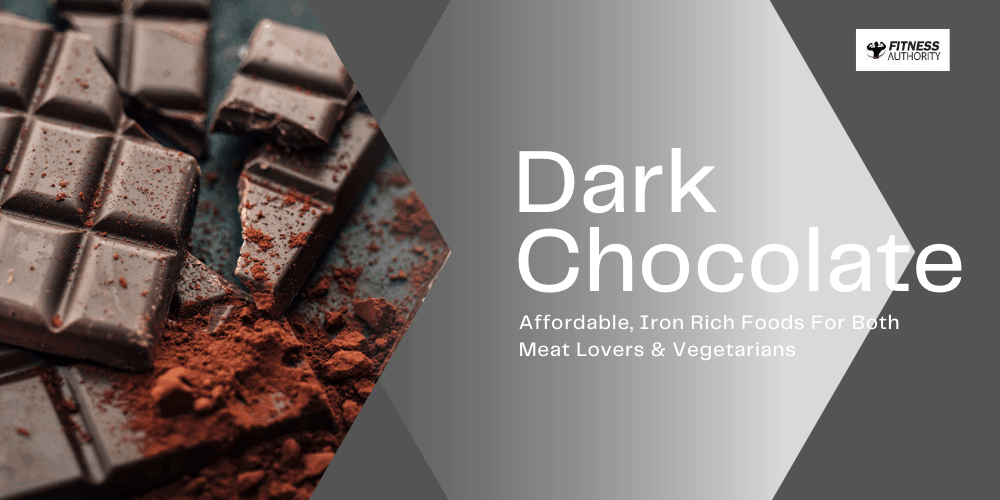
Chocolate (especially dark chocolate)
It is possible to buy vegan chocolate, but most widely-sold brands do use milk, hence we have put it in the vegetarian category. Mainstream chocolate can be very high in sugar, but higher-quality chocolate tends to have a much lower sugar content, which makes it at least a bit healthier. The reasons why dark chocolate is the best choice is that it is both full of flavonoids, which have a wide range of health benefits and a very good source of iron. In fact, 30g (an ounce) of dark chocolate has about 2mg to 3mg of iron, so although it can’t exactly be recommended as one of your major sources of iron, if you’re looking for a sweet treat, you might as well go for one which does you some good too!
As chocolate is made to all kinds of different recipes, it’s impossible to give clear guidance on is nutritional values, check the label when you go to buy it.
Special note for vegetarians
As a rule of thumb, foods which are high in protein are also good sources of iron, but dairy products are the exception to this rule. In fact eating high quantities of dairy products and/or eating dairy products at the same time as you eat iron-rich foods may actually impede your absorption of iron. The reason for this is that dairy products are full of calcium, which is very important in our diet, but some research suggests that calcium actually impairs the body’s ability to absorb iron and hence it’s best to eat calcium-rich foods, such as dairy products, at separate times of day to iron-rich foods.
For Vegetarians and Vegans (and meat eaters too)
You may be surprised to learn that there is a huge range of plant-based foods which are full of iron. As with the meat-base list, we’ve listed the ones we think offer the best overall value in terms of price, availability and the ease with which they can be incorporated into a person’s diet. There are actually plenty of other plant-based sources of iron out there, this is just our pick of what we think are the best ones.

Potatoes
Potatoes are one of the cheapest foods around and you might find yourself very surprised by just how much iron they contain. A 100g (3 ounce) portion of potatoes contains about 1mg of iron. If you’re not a big fan of potatoes with meals, you could try using them in baking instead.
A bonus with potatoes is that not only do they contain iron, they also contain significant amounts of vitamin C, which is believed to help with iron absorption.
A 100g serving of plain (boiled) potatoes, will contain about 93 calories and 1g of fat in addition to the iron. Of course, if you start adding lashings of butter or frying them or adding mounds of salt, then this will impact their overall nutritional value.

Legumes
Legumes (beans, peas and lentils) are a staple food around the planet because they are very affordable and full of goodness, in this case, iron (and protein). They’re also very versatile. While legumes are only very rarely the star of the show where meals are concerned (lentil soups and salads being a possible exception), they can be easily added to just about any meal and are tasty and filling as well as highly nutritious.
As an example, 100g of lentils will provide about 350 calories, with 10g of fat and 30g of protein along with between 3mg and 8mg of iron, depending on the type of lentils.
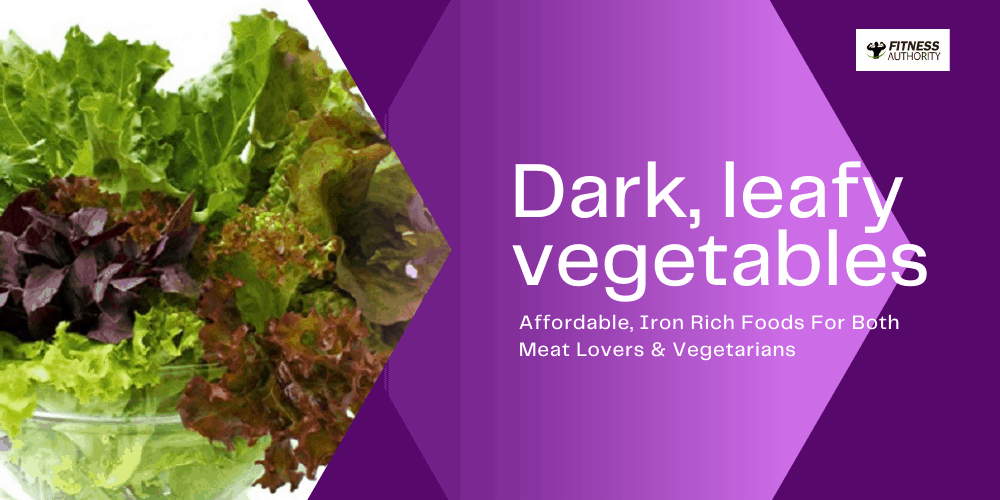
Dark, leafy vegetables
Remember the old Popeye cartoons? They showed Popeye downing a can of spinach and immediately discovering the great strength he needed to save the day. Sadly, the real world doesn’t quite work like that, but eating dark, leafy vegetables is certainly a great way to get your iron at a low cost, with spinach being particularly good, Swiss chard and kale are also good options.
NB: when raw, dark, leafy vegetables such as spinach contain oxalic acid, which can interfere with the body’s absorption of certain nutrients. Cooking breaks down oxalic acid, which is why it improves absorption of some nutrients such as iron. It’s fine to eat these vegetables raw too, just not all the time.
A 100g serving of cooked spinach has about 23 calories, 3g of fat and 2.5g of fibre, along with about 3.5mg of iron as compared to 2.7mg of iron for raw spinach.

Cruciferous vegetables
Cruciferous vegetables are variations of mustard, crucifers and cabbage, most of them have dark green, curly leaves and compact flowers. Common examples of cruciferous vegetables are broccoli, cabbage and Brussels sprouts.
A 100g serving of broccoli has a mere 30 calories and just under 1g of fat, but about 1mg of iron.
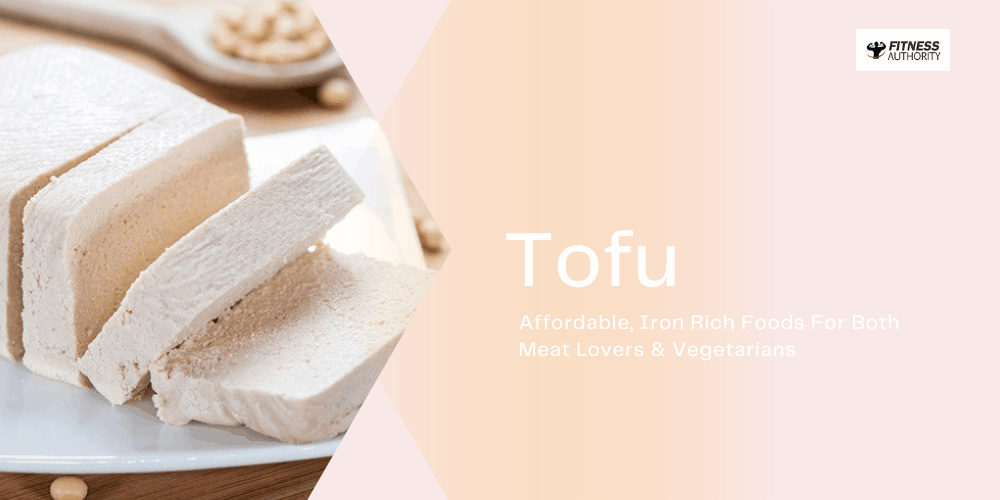
Tofu
Tofu may be a bit of a vegetarian/vegan cliche but the fact still remains that it’s full of nourishment and, in particular, it’s one of the best non-meat sources of iron there is. Tofu itself tastes of pretty much nothing, the idea is that you add flavour to it during your cooking. It comes in a wide variety of textures, so if you’ve tried it before and didn’t like the feel of it, then maybe it’s time to try another form of it.
Cliche or not, tofu has an impressive nutritional profile. A 100g serving provides 110 calories with about 5g fat, 16g protein and 3mg of iron.
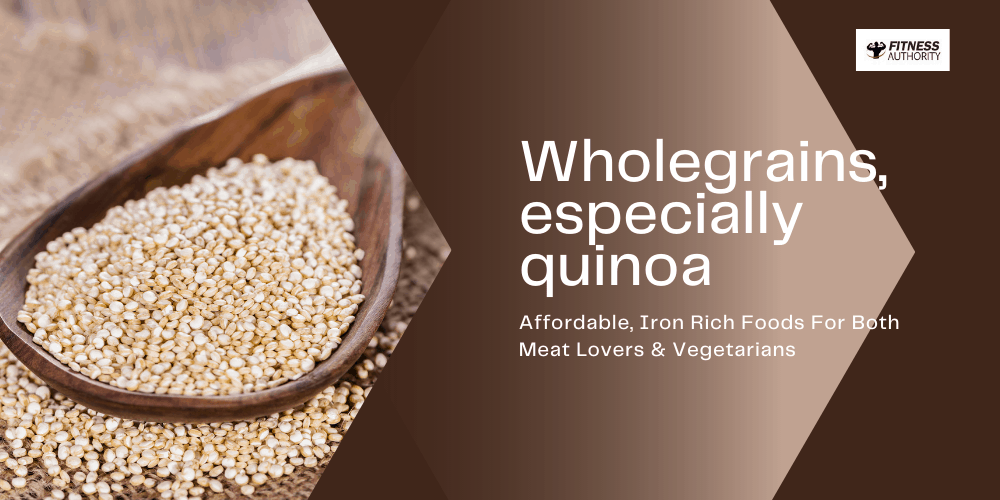
Wholegrains, especially quinoa
Processed grains tend to have the nutrients taken out of them, wholegrains, however, can be a very cost-effective source of iron. While quinoa leads the pack in terms of iron content, its availability depends on where you live (you can order online but then you will have to think about the cost of delivery plus the practicality of receiving a large package). It can also be on the expensive side. More common grains such as wholegrain rice, oats and barley can be more practical options.
Wondergrain quinoa offers 120 calories per 100g along with about 2g of fat, 4g of protein and 8mg of iron.
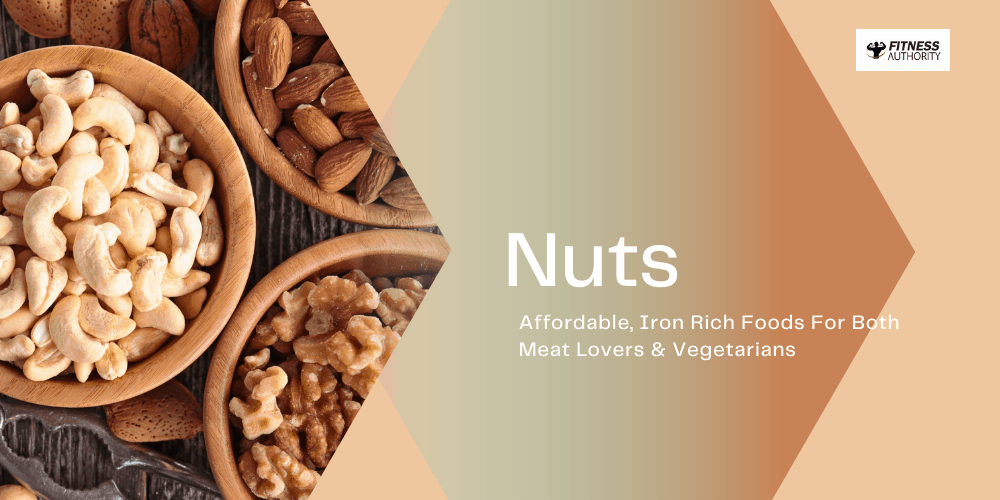
Nuts
Our number one recommendation is plain, old peanut butter (the no-sugar or at least low-sugar sort) on the grounds that it’s widely available, very affordable and full of iron (and protein). There are, however, plenty of other options, with cashews being a particularly good choice. As always, exercise a bit of common sense here. Plain nuts are pretty much universally healthy, even though some of them are quite high in fat, but if you eat them smothered in salt, sugar, artificial colours and/or flavours and/or other unhealthy toppings, then the fact that they will still boost your iron intake may not be enough to stop them from being an unhealthy option overall.
A 100g serving of raw, unsalted peanuts does carry about 600 calories and 50g of fat, on the plus side it also has about 26g of protein and about 2mg of iron.

Seeds
Most seeds have a decent amount of iron. If we had to pick out one type of seed in particular, we’d have to go for chia seeds, which are simply full of it. It does, however, have to be said that while chia seeds are highly nutritious and can be easily purchased online, they are best eaten with other food rather than as a snack (although you certainly can eat them just as they are). If you want something with a bit more taste which still has plenty of iron, we’d suggest pumpkin seeds or sesame seeds.
A 100g serving of chia seeds provides about 500 calories, with 30g of fat and 14g of protein together with over 7mg of iron.
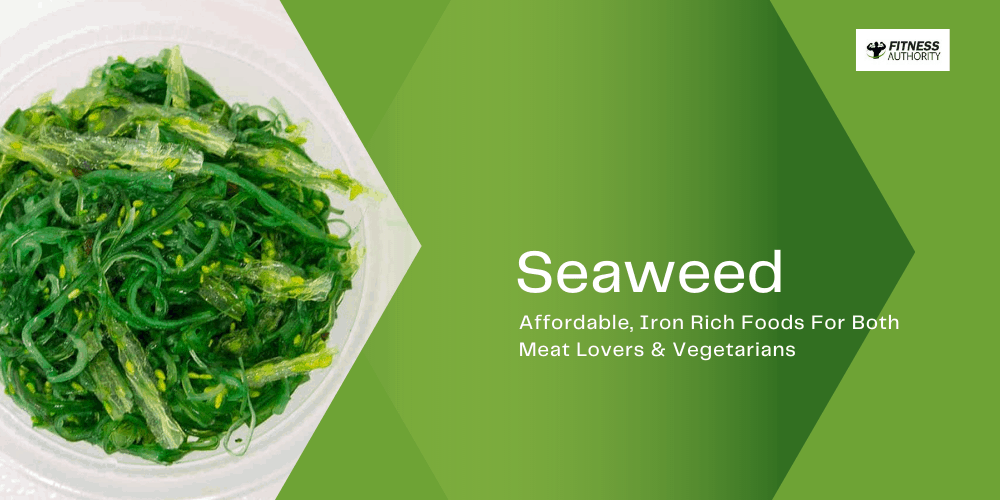
Seaweed
If you’re thinking that all the buzz around seaweed as a wonder food was just marketing over matter, then rest assured, seaweed really is as good as it’s made out to be and our first suggestion would be spirulina. Depending on where you live, you may need to order this online, but it’s well worth the investment as it’s full of nutrients, including iron.
A 100g serving of spirulina has about 290 calories together with about 8g fat and an impressive 60g of protein as well as over 28mg iron.
Special mention for oranges and other vitamin C-rich foods
We’ve mentioned this when talking about potatoes, but we think it’s worth repeating. Evidence suggests that vitamin C can help with iron absorption, so consider adding vitamin C-rich foods to your meals to improve your iron levels.
If all else fails, try an iron supplement?
We hope we’ve demonstrated that you can get all the iron you need through your diet without having to blow your food budget on expensive cuts of meat. In fact, you can meet your need for iron through entirely plant-based foods, which is probably the most affordable option of all. Having said that, we live in the real world and if you have a particularly high need for iron and/or for whatever reason, you’re not getting enough iron from your food, then an iron supplement could be a feasible option although for most people it should ideally be used as a short-term measure while you work to increase your intake of iron through your food.













